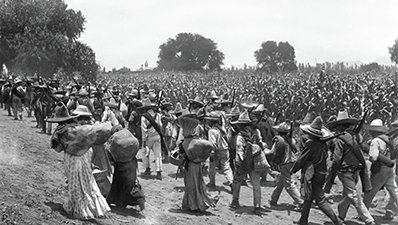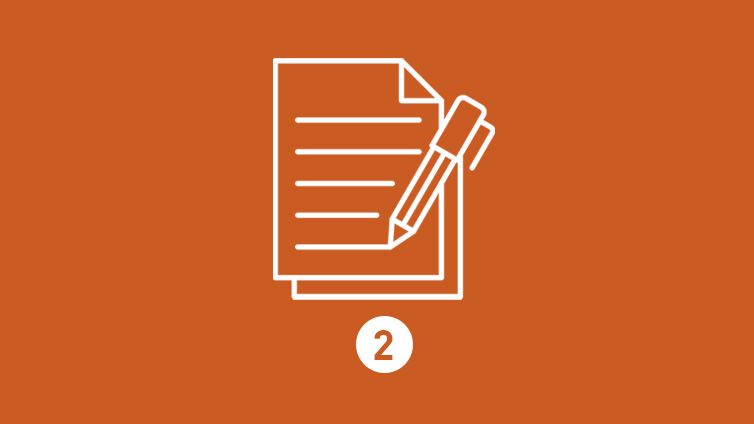The World Remade
Driving Question: How did World War I remake society?
World War I left behind more than wreckage. From fragile peace talks to sweeping revolutions, it pushed people to imagine new ways to organize on global, national, and local scales.
Learning Objectives:
- Evaluate how different nations approached the peace process after World War I.
- Use the historical thinking practice of comparison to analyze the causes and outcomes of the Mexican and Russian Revolutions in the context of World War I.
Vocab Terms:
- Bolsheviks
- casualty
- diplomacy
- disillusion
- ethnic
- genocide
- persecution
Opener: The World Remade
To teach this lesson step, refer to page 2 of the Lesson 6.5 Teaching Guide.
How did people cope with the end of the First World War? While many hoped this would be the first and last total war, the uneasy peace that ended the war didn’t hold for long.
An Uncertain Peace
To teach this lesson step, refer to page 2 of the Lesson 6.5 Teaching Guide.
Looking to save some paper while implementing this fun simulation? Look at the modifications teachers made in the Forum thread World War I Peace Talks Cards – Less Paper.
The end of World War I didn’t mean the end of conflict. The peace process created new tensions and raised big questions about justice, power, and responsibility.
Atrocity in the Ottoman Empire
To teach this lesson step, refer to page 6 of the Lesson 6.5 Teaching Guide.
This video covers difficult content. Think about how to approach hard topics with your students by taking a look this guide on Teaching Sensitive Topics in Social Studies.
World War I brought devastation not only to armies, but also to entire communities. The Armenian Genocide shows how the war intensified violence against civilians and altered the social fabric of empires.
-
Guiding Questions
-
Before you watch
Preview the questions below, and then review the transcript.
While you watch
Look for answers to these questions:
- How is genocide defined?
- What were millets?
- Why did the Ottoman rulers begin to view Armenians as a threat?
- Why did tension between Armenians and the state increase with the establishment of the new Young Turk government?
- How did the international community respond to the Armenian Genocide?
After you watch
Respond to this question: In what ways does the Armenian Genocide show the limits of global networks during wartime?
Key Ideas
Social Revolutions
To teach this lesson step, refer to page 7 of the Lesson 6.5 Teaching Guide.
Want to provide your students with structured feedback on their historical comparison skills? The Comparison Feedback Form is perfect for this!
In the tumult of global conflict, revolutionaries in Mexico and Russia seized the moment to push for change. These materials will guide you through an investigation of how war accelerated calls for justice and reform.
-
Guiding Questions
-
Before you read
Preview the questions below, and then skim the article. Be sure to look at the section headings and any images.
While you read
Look for answers to these questions:
- What is the difference between a social revolution and a political revolution?
- Who was Porfirio Díaz?
- Why did Madero lose power as president?
- What role did the United States play in the Mexican Revolution?
- What did each of the two main sides of the revolution want after 1913?
After you read
Respond to this question: Which causes of the Mexican Revolution seem most important to you—political or social? Use examples to explain your thinking.
-
Guiding Questions
-
Before you read
Preview the questions below, and then skim the article. Be sure to look at the section headings and any images.
While you read
Look for answers to these questions:
- Why did Russian peasants welcome news of the revolution?
- How did the tsar’s actions help spark the revolution?
- Why didn’t nationalism have the same effect in Russia as in other European countries?
- How did the Bolsheviks change life in terms of production and distribution in Russia?
- How did the Bolsheviks change life in terms of communities in Russia?
After you read
Respond to this question: Do you think World War I would have been different if Russia or other nations had communist systems before 1914?
Closer: The World Remade
To teach this lesson step, refer to page 12 of the Lesson 6.5 Teaching Guide.
Closers like the Unit Notebook are a great opportunity to assess student understanding of the lesson. Read more about in the OER Project Assessment Guide.
In this unit, you explored how the First World War remade societies, sparked revolutions, and shifted global power. Now, reflect on these transformations and how they continue to shape our world today.
Continuity and Change in a World at War
To teach this lesson step, refer to page 13 of the Lesson 6.5 Teaching Guide.
How much did World War I really change the world? Use your knowledge of imperialism and total war to track big shifts across time, seeing what changed and what didn’t.
Ripples of War
To teach this lesson step, refer to page 16 of the Lesson 6.5 Teaching Guide.
World War I set off upheaval across the globe. These stories from Southeast Asia and the Middle East show how the war’s impact reached societies far from the front lines.
-
Guiding Questions
-
Before you watch
Preview the questions below, and then review the transcript.
While you watch
Look for answers to these questions:
- What political powers controlled the Middle East in 1914?
- Why did the Ottoman Empire issue a declaration of jihad during the war?
- Who was Sharif Hussein?
- What did the British promise Sharif Hussein during the war?
- What were mandates?
After you watch
Respond to this question: What was the most important way World War I changed the Middle East?
Key Ideas
-
Guiding Questions
-
Before you watch
Preview the questions below, and then review the transcript.
While you watch
Look for answers to these questions:
- Who controlled most of Southeast Asia in 1914?
- How were people in Southeast Asia connected to events in the Middle East?
- Why did the Russo-Japanese War inspire people in Southeast Asia?
- What made Singapore strategically important?
- How did German submariners convince Indian soldiers to revolt in Singapore?
After you watch
Respond to this question: Was Southeast Asia important to the course of World War I?




